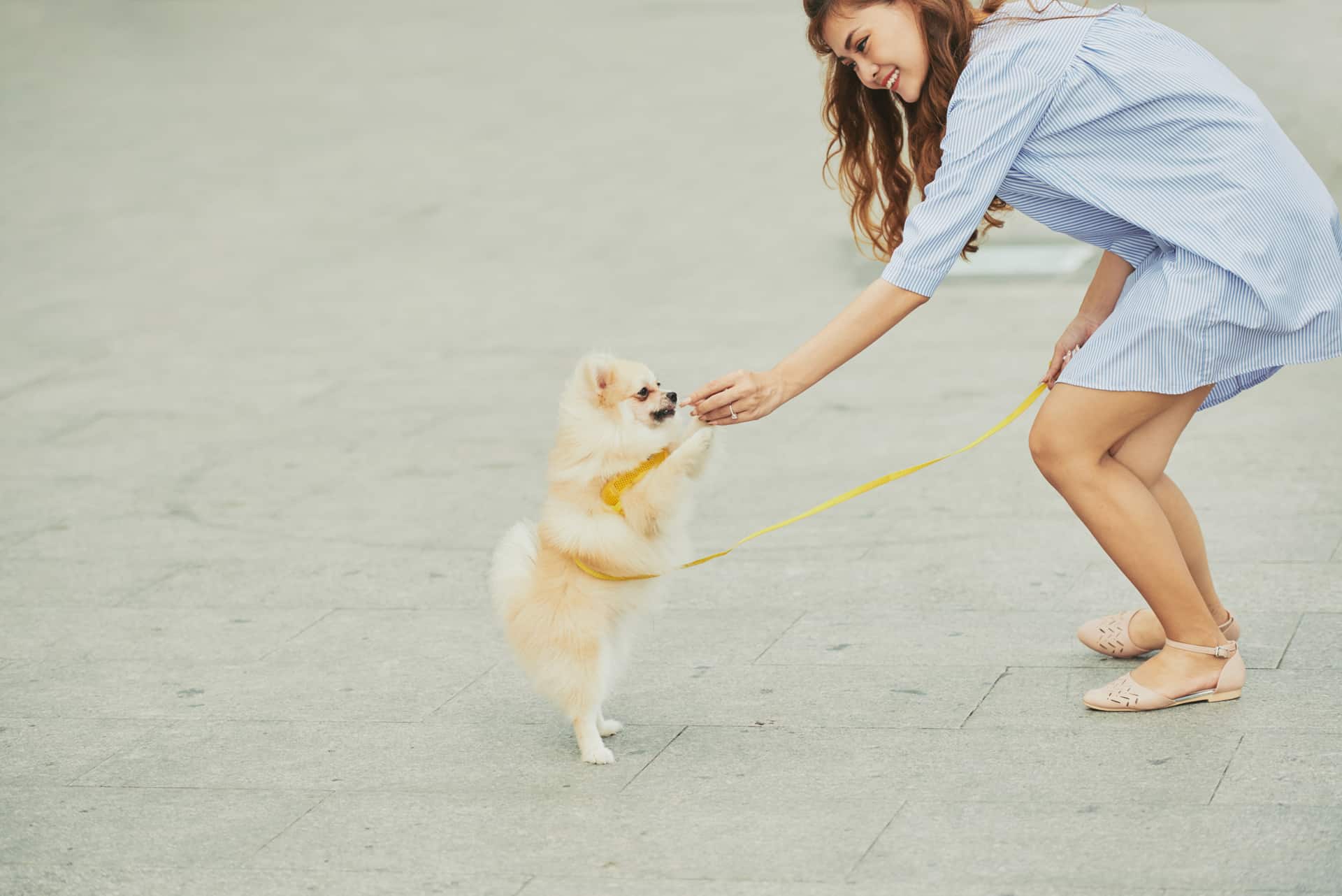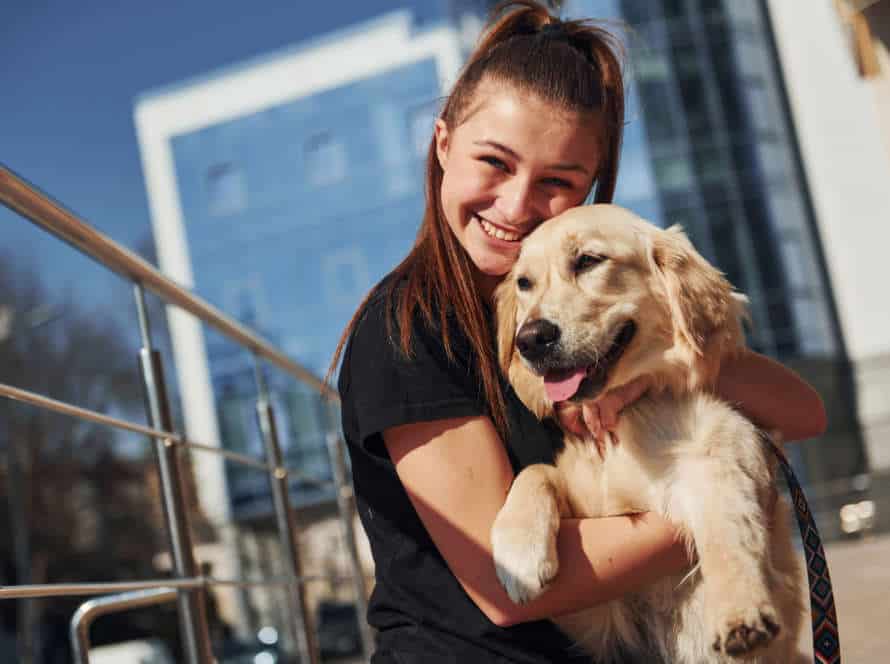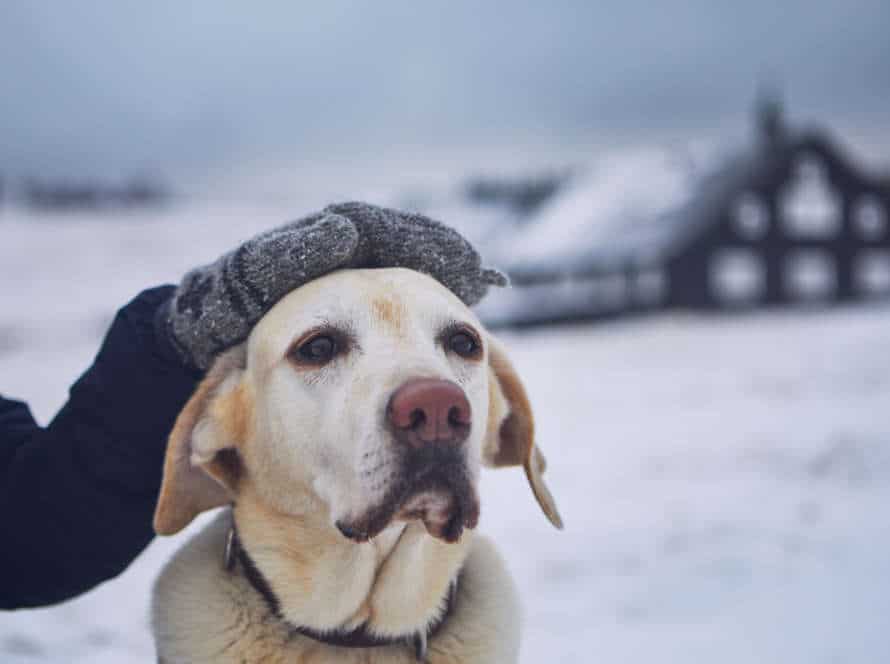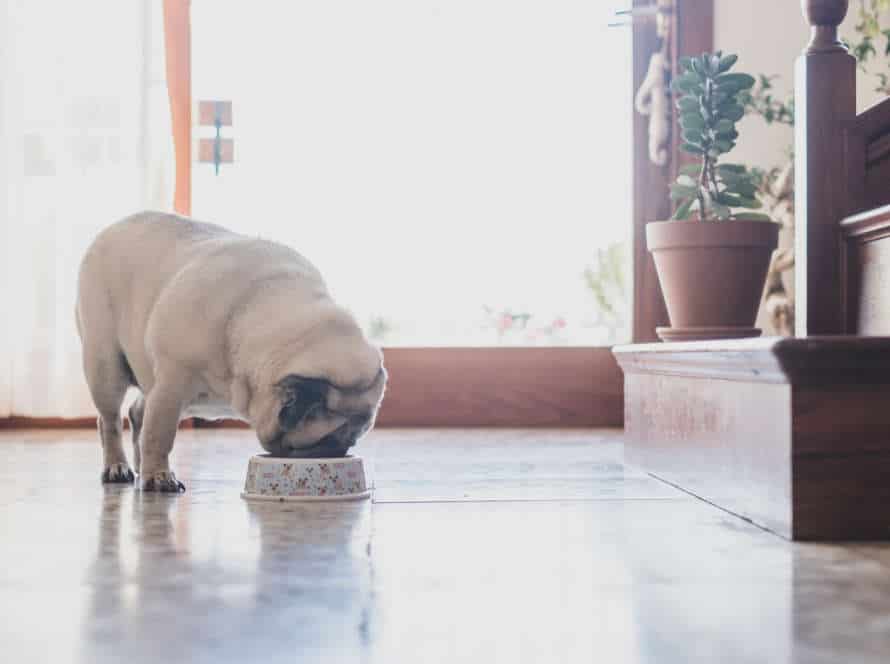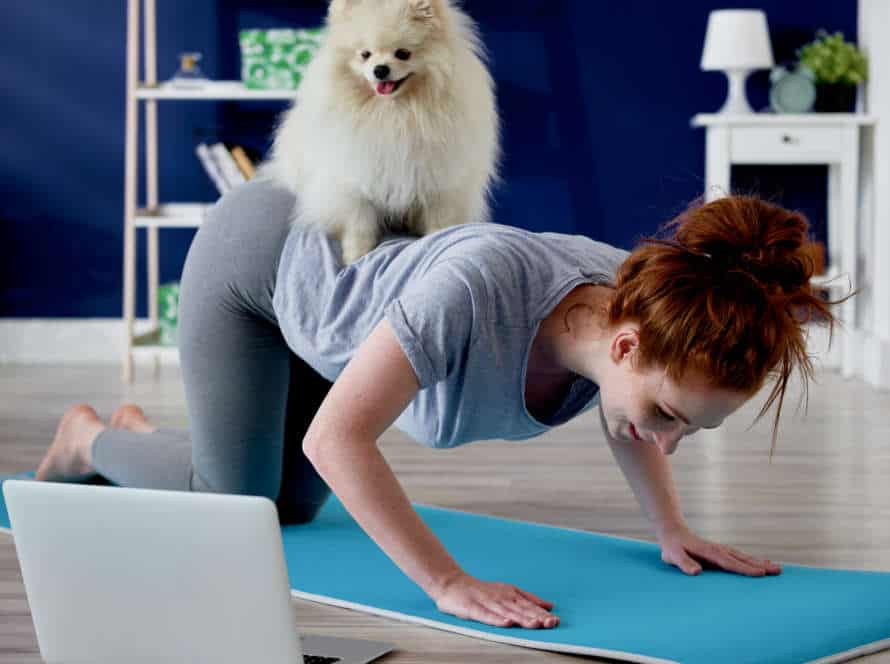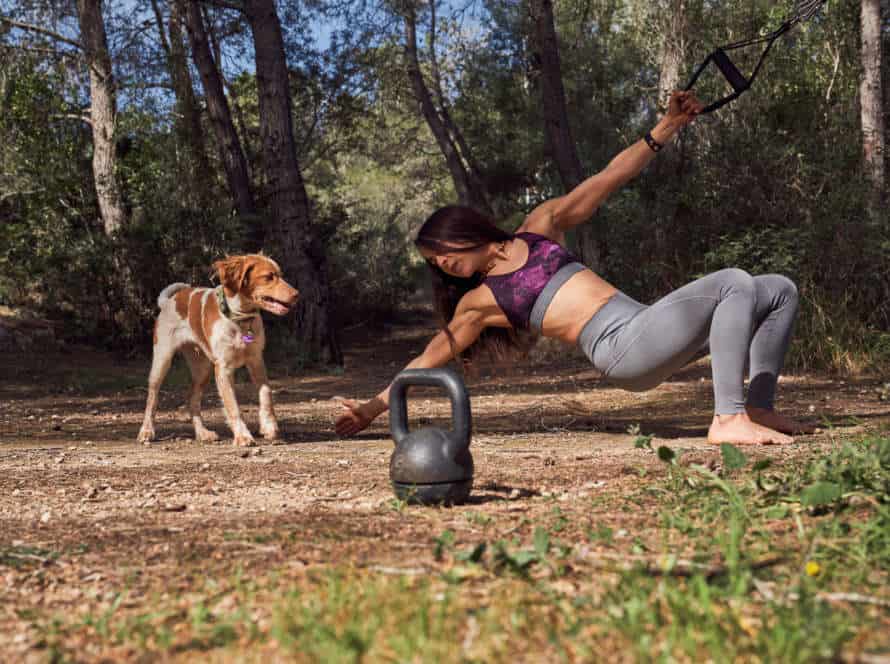From Good to Great: How Positive Reinforcement Benefits Your Dog
Positive reinforcement training can take your pup’s behavior to a whole new level. Reward good behavior, ignore bad, and you’ll train your pooch to be well-mannered, obedient and happy.
Benefits of positive reinforcement:
- Builds trust and confidence.
- Encourages good behavior.
- Reduces fear and anxiety.
- Creates a stronger bond.
Pro Tip: To reward your dog effectively, use yummy treats like cooked chicken or cheese!
Understanding Positive Reinforcement
Positive reinforcement is a technique to train your pet. It rewards good behavior, making it stronger and more frequent. It’s a reward-based system that’s great for you and your pup. Let’s look at how to use it to benefit your dog. It’s humane, effective, and easy to do.
Definition of Positive Reinforcement
Positive reinforcement is a great way to train your pup. It works on the idea of giving them something nice when they do something right. So, when your dog follows a command or shows good manners, give them treats, toys, or praise.
This form of training has lots of advantages. Your pup will feel more secure, content, and motivated. Plus, it will make your bond with them stronger.
With positive reinforcement, you can help your dog reach their full potential. All it takes is a bit of kindness and a whole lot of reward!
How Positive Reinforcement Works
Positive reinforcement is a technique used in training. It rewards desired behaviors and discourages undesired ones. A reward such as a treat, toy or words of praise is given right after the behavior. It helps your dog understand that the behavior is linked to a positive outcome and encourages them to do it again.
Studies show that this technique helps dogs learn faster and also helps them remember it for longer. This makes for a stronger connection with you and your pet.
Pro tip: Consistently use positive reinforcement for the behaviors you want. This will become ingrained in your dog’s character and make them a happy and obedient pet.
Benefits of Positive Reinforcement over Punishment-Based Training
Positive reinforcement is a great way to train your pup. It’s way better than punishment-training. Here are the pros:
- Builds Trust & Confidence: Positive reinforcement builds a bond of trust and confidence between you and your dog. When your dog does something good, reward them and they’ll learn to trust you more.
- Creates Long-Term Behavior Changes: Unlike punishment-training, positive reinforcement creates lasting behavioral changes. Your dog learns to associate good behavior with rewards, so they repeat it in the future.
- Improves Communication: When you use positive reinforcement, you’re communicating in a way your dog can understand. This helps them pay attention to you and respond.
- Stimulates The Mind: Positive reinforcement gives your dog mental stimulation – an important part of their wellbeing. When you give them a job, like tricks or commands, they feel a sense of purpose and fulfillment.
- Strengthens Your Relationship: Positive reinforcement training helps you and your dog bond. When you reward them, you show them love and affection, which makes them love and trust you even more.
Pro Tip: Whenever you use positive reinforcement, use high-value rewards like treats and toys to really motivate them. This will help them keep learning!
Positive Reinforcement Techniques
Positive reinforcement is a great way to train a pup. It forms a strong bond between pup and owner. Plus, it helps your dog learn good behaviour. They’ll also learn to trust you more, as they’ll link good behaviour to the positive reinforcement. In this piece, we’ll look at the different techniques of positive reinforcement and how they can benefit your pooch.
Using Treats and Food Rewards
Treats and food rewards are a great way to positively reinforce your pup’s training. To get the most out of it, try different types of treats to see which ones your dog likes best. Cut the treats into small pieces so you have enough for multiple training sessions. Be consistent in awarding treats during each session. As your pooch learns the behavior, gradually reduce treating until you can use verbal commands instead. With treats and food rewards, you can make training a rewarding experience for your pup and help them become a well-behaved dog.
Using Toys and Play
Toys and play are an amazing way to positively reinforce dog training. Not only does it encourage good behavior, but it also helps build a strong connection between pup and owner.
You can use games like fetch, tug of war, or hide and seek as rewards for when your dog follows commands, like sitting or staying. Speak in a happy and excited tone while playing, this will further reinforce the positive association.
Toys and play are especially great for high-energy breeds that need a lot of exercise and mental stimulation. Keeping your pup engaged in fun and interactive play helps them stay focused and take orders. Always use positive reinforcement instead of punishing them for long-lasting changes in behaviour.
Pro tip: Introduce new toys or switch up the selection occasionally, so your dog stays motivated and eager during playtime.
Using Praise and Attention
Praise and attention are a great way to make good dogs even better. Give feedback when they do something right. Here’s how:
- Immediately praise and show attention when your dog acts correctly, like petting them or giving them a treat.
- Be consistent with your feedback.
- Sound upbeat when giving praise and attention.
- Be specific in your feedback like “good boy” or “good job”.
Your dog will learn that good behavior gets positive attention. This leads to even better behavior in the future.
Training Your Dog with Positive Reinforcement
Positive reinforcement is a brilliant way to teach your pooch. Give treats and praise for behaviours you want them to repeat. This encourages your pup to obey and be well-behaved. Let’s look at the advantages of using positive reinforcement and how to do it right!
Setting Goals for Training
Set clear and do-able goals for teaching your pup positive reinforcement. It’ll make for a great experience for both of you! Here’s a few ideas:
- Decide which behaviors you want to teach, like ‘sit‘, ‘down‘, ‘stay‘ or leash walking.
- Break it into easy bits to take away the stress.
- Work out when you’d like to get there, keeping in mind your pup’s personality, learning style, and temperament.
- Reward your pup with treats, toys, and praise for good effort and progress.
By having realistic goals and being consistent with your training, you will build a strong bond with your pup and help them reach their highest potential.
Teaching Basic Commands
Train your pup using positive reinforcement for the best and kindest results! This means giving treats, praise, or playtime when your dog does something good. It’s natural, proven by science, and makes your dog trust you and obey you.
Commands like ‘sit’, ‘stay’, ‘come’, and ‘heel’ can be quickly learned when taught in a consistent way with positive reinforcement. Your dog will be motivated to learn and happy to please you! This builds a strong bond between you two, and strengthens your relationship.
If you want to teach your pup to obey, have fun, or compete, positive reinforcement is an effective and satisfying way to train them.
Overcoming Challenges with Positive Reinforcement
Positive reinforcement training for dogs can be tough. But, with the correct attitude and strategy, you can get great results. Here are some of the usual issues dog owners face and how to tackle them:
- Erratic training: Dogs love routine and repetition. Use the same cues and reward good behavior regularly.
- Impatience: Positive reinforcement requires time and effort. Be patient and consistent and celebrate the small successes to achieve long-term victory.
- Lack of motivation: If your pup isn’t responding to positive reinforcement, try high-value rewards like their favorite toy or treat. This should motivate your pup to learn and behave.
By overcoming these issues with positive reinforcement, you can enhance your pup’s behavior, nurture your bond, and create a content and fulfilling connection for both you and your pet.
The Importance of Consistency in Positive Reinforcement Training
Key to training a dog, any breed or age, is positive reinforcement. Consistency plays a big role in positive reinforcement. Set expectations for the dog in a clear way. Give regular positive reinforcement and reward quickly for the desired behavior. This will help your dog trust and obey you.
Setting a Consistent Routine
Consistent routines are key for successful positive reinforcement training for dogs.
Pups love stability and structure, so it’s up to you, the owner, to create and stick to a set routine of rewards and consequences. This way, they’ll understand what is expected of them and what they’ll get in return.
Set a regular schedule for feeding, playtime, and training sessions. Award your pup with praise and rewards for good behavior and use a consistent disciplinary response for bad behavior.
Then, over time, your pup will learn what actions produce what results.
But, remember: patience, time, and consistency are the foundations of successful positive reinforcement training.
Keep up the routine and soon you’ll see your dog going from good to great!
Avoiding Mixed Signals
Consistency is key for successful positive reinforcement training. Avoiding mixed signals is vital. Why? Dogs like routine and consistency. They learn best when a behavior is connected to a positive consequence immediately.
The language used, tone of voice, and timing of reward all play a role in how your pup learns. Mixed signals, like rewarding them for something they shouldn’t do, can be confusing and counterproductive.
A consistent approach will build trust between you and your pup. Pro tip: training with positive reinforcement takes patience and time. Focus on small victories and progress, not perfection.
Incorporating Positive Reinforcement into Everyday Life
Consistency is key for daily positive reinforcement. Positive reinforcement training is a way of rewarding desirable behaviors to get them to happen more. These tips will help you keep it up:
- Set clear and concise rules for your dog.
- Use rewards your pup loves.
- Timing is key. Give the reward right after the behavior.
- Reinforce positive behaviors regularly and often.
- Say no to punishment-based methods.
- Consistent reinforcement forms good habits and better behavior in time. It also makes the bond between you and your pup stronger, giving you a happier, more behaved pet. Positive reinforcement should be used daily, not just during training sessions.
Real-Life Benefits of Positive Reinforcement Training
Positive reinforcement is a great training technique. It’s all about rewarding good behavior and ignoring the bad. Educators and psychologists have used it for decades. Now, animal trainers are getting in on the action. Let’s check out the benefits this brings to you and your pup!
Increased Bonding and Trust with Your Dog
Positive reinforcement training can boost bonding and trust with your pup! Here’s how:
- It creates a strong relationship. When you use positive reinforcement, you’re actively forming a positive relationship with your pup. By rewarding them for good behavior, you show them you’re a trustworthy presence.
- It builds confidence. Training with rewards will make your pup feel more confident and capable. This will lead to better behavior, eagerness to please, and a happier attitude.
- It reduces anxiety. A supportive, safe environment will help reduce anxiety. Plus, training helps create a structured routine that’s great for anxious dogs.
Pro tip: Positive reinforcement isn’t just for pups – it’s perfect for older dogs too. It’s never too late to start building a strong bond with your furry friend.
Better Behavior and Manners
Positive reinforcement training is a great way to better your pup’s habits and form a more fulfilling relationship between you both. Here are the real-life advantages of using positive reinforcement:
- Obedience boosted! Treats, compliments or play are given to reward desired behavior, causing your pup to connect good behavior with pleasant results.
- Better self-esteem! With positive reinforcement, trust is developed, positive relationships are enforced and a safe space is created for your pup to learn.
- Enhanced communication! Cues, signs and rewards that are always used make it easier for your pup to understand you.
- Stronger connection! Positive reinforcement training creates a closer bond between you and your pup, resulting in a healthier relationship.
Tip: Remain consistent and patient when training your pup with positive reinforcement, and reward good behavior immediately to get the desired response.
Enhanced Mental and Emotional Wellbeing for You and Your Dog
Positive reinforcement training is a great way to improve your pup’s behavior. Plus, it brings joy to both you and your pup!
Benefits:
- It builds trust. It creates good associations between rewards and training.
- It improves social skills. Your dog can interact better with other dogs and people.
- It reduces stress. This kind of training doesn’t use punishment, so it’s less stressful.
- It’s fun! It makes learning enjoyable for both of you.
Positive reinforcement training can take your dog from good to great. And, it promotes mental and emotional wellbeing for both you and your pup.
Frequently Asked Questions
Q: What is positive reinforcement for dogs?
A: Positive reinforcement is a training technique that involves rewarding dogs for good behavior, rather than punishing them for bad behavior. This can include treats, praise, toys, or other forms of positive reinforcement.
Q: How does positive reinforcement benefit my dog?
A: Positive reinforcement helps your dog associate good behavior with rewards, making them more likely to repeat that behavior in the future. It also strengthens the bond between you and your dog, and can improve their overall well-being and happiness.
Q: Can positive reinforcement be used for all types of dog training?
A: Positive reinforcement is effective for most types of dog training, including obedience training, leash training, and even some behavior modification techniques. However, it may not be the best approach for more aggressive or reactive dogs, in which case a professional dog trainer may be needed.
Q: What are some common examples of positive reinforcement for dogs?
A: Common examples of positive reinforcement include giving your dog a treat for sitting or lying down, praising them for good behavior, or playing with them when they follow commands.
Q: Can using positive reinforcement lead to a spoiled or disobedient dog?
A: No, if done correctly, positive reinforcement will not lead to a spoiled or disobedient dog. In fact, it often leads to a better-behaved and well-trained dog, as they learn what behavior is expected of them and are rewarded for it.
Q: Can I start using positive reinforcement with an older dog?
A: Yes, positive reinforcement can be effective with dogs of all ages, although it may take longer to see results with an older dog who has already learned undesirable behaviors.

